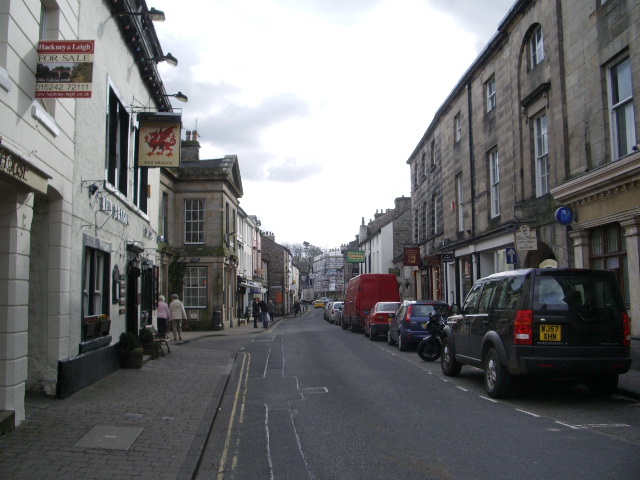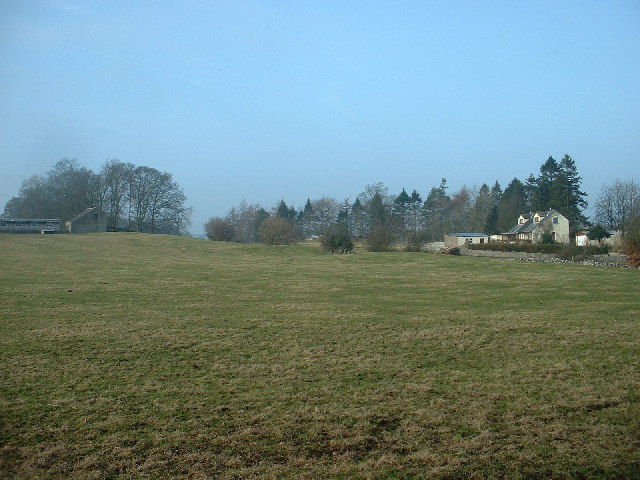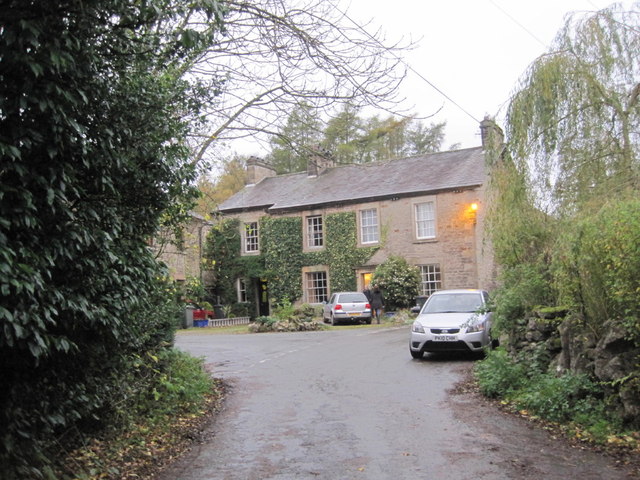Topics > Civil Parishes in Cumbria > Kirkby Lonsdale Town Council area > Kirkby Lonsdale Parish, 1848
Kirkby Lonsdale Parish, 1848
KIRKBY-LONSDALE (St. Mary), a market-town and parish, in the union of Kendal, Lonsdale ward, county of Westmorland; comprising the chapelries of Barbon, Casterton, Firbank, Hutton-Roof, Killington, Mansergh, and Middleton, and the townships of Kirkby-Lonsdale and Lupton; and containing 4,178 inhabitants, of whom 1,629 are in the township of Kirkby-Lonsdale, 30 miles (S. by W.) from Appleby, and 252 (N.W. by W.) from London, on the great road from Kendal to Leeds. The name of this place is derived from its having been the chief town of the district which had a church, and the adjunct Lonsdale from its situation in a dale, or valley, on the western bank of the river Lon or Lune. The town is one of the largest in the county, and consists of several handsome streets, which are lighted, but not paved; the three principal ones meeting nearly in the centre, where is the market-place. The houses are well built of white hewn stone, and roofed with blue slate, and many of them have fine gardens attached; the inhabitants are supplied with water from a spring at Totley wood, one mile distant, by means of pipes, under the direction of a joint-stock company. A book society, supported by subscription, was founded in 1794. The manufacture of knit stockings, for which the place was famous, has declined; and the weaving of carpets, blankets, coarse linen, calico, and gingham, is now carried on, to a small extent. Approaching the town from Lancaster, the river Lune is crossed by a lofty stone bridge of great antiquity. The market is on Thursday; and fairs are held on Holy-Thursday and October 5th for horned-cattle and horses, and on St. Thomas' day for woollen-cloth. The market-place, formed in 1822, is a spacious quadrangle: in the fish-market is an ancient market-cross. A court-leet and view of frank-pledge for the manor are held in October; and petty-sessions for Lonsdale ward every Thursday. The powers of the county debt-court of Kirkby-Lonsdale, established in 1847, extend over the registration-district of Sedbergh, and part of the districts of Kendal, Settle, and Lancaster.
The living is a discharged vicarage, valued in the king's books at £20. 15. 2.; net income, £250; patrons and impropriators, the Master and Fellows of Trinity College, Cambridge. The church is a noble structure of great antiquity, with a square tower which was rebuilt in 1705; the interior is divided into four great aisles, by three rows of pillars, which support the roof: the arched doorway under the tower is evidently of Norman architecture; the east window, with light detached pillars, is in the early English style. Each of the chapelries forms a separate incumbency, and there was formerly a chapel at Tarn-side. The Independents, Wesleyans, and Glassites, or Sandemanians, have places of worship. The free grammar school was founded in 1591, by letters-patent of Queen Elizabeth, and endowed by Mr. Godshalfe and others; the endowment has been augmented, and produces about £50 per annum. There are four exhibitions, of £5 per annum each, to Queen's College, Oxford, founded by Henry Wilson in 1638; three, of about £20 each, to Christ's College, Cambridge, on the foundation of the Rev. Thomas Wilson, in 1626; and three at the same college, founded by Dr. Thomas Otway, Bishop of Ossory, who died in 1692. At Sellet Bank, about a mile and a half from the town, is a chalybeate spring; and according to tradition, an artificial mound in the neighbourhood, called Cock-Pit Hill, is the tumulus of one of the British kings. Lonsdale gives the title of Earl to the family of Lowther.
Extract from: A Topographical Dictionary of England comprising the several counties, cities, boroughs, corporate and market towns, parishes, and townships..... 7th Edition, by Samuel Lewis, London, 1848.

Co-Curate Page
Kirkby Lonsdale
- Overview About Kirkby Lonsdale Map Street View Kirkby Lonsdale is a market town in Cumbria, located about 10 miles south of Kendal. St Mary's Church was built in the 12th …

Co-Curate Page
Middleton, Westmorland, 1848
- MIDDLETON, a chapelry, in the parish of Kirkby Lonsdale, union of Kendal, Lonsdale ward, county of Westmorland, 3½ miles (N. by E.) from Kirkby Lonsdale; containing 275 inhabitants. It comprises …

Co-Curate Page
Firbank
- Overview About Firbank Map Street View FIRBANK, anciently Frithbank, a chapelry, in the parish of Kirkby-Lonsdale, union of Kendal, Lonsdale ward, county of Westmorland, 10½ miles (N.) from Kirkby-Lonsdale; containing …

Co-Curate Page
Killington, Westmorland, 1884
- KILLINGTON, a chapelry, in the parish of Kirkby Lonsdale, union of Kendale, Lonsdale ward, county of Westmorland, 4 miles (S.W.) from Sedbergh; containing 301 inhabitants. The chapelry is situated on …

Co-Curate Page
Casterton Township, 1848
- CASTERTON, a township and chapelry, in the parish of Kirkby-Lonsdale, union of Kendal, Lonsdale ward, county of Westmorland, 1½ mile (N.E.) from Kirkby-Lonsdale; containing 623 inhabitants. This place, which is …

Co-Curate Page
Barbon, 1848
- BARBON, a chapelry, in the parish of Kirkby Lonsdale, union of Kendal, Lonsdale ward, county of Westmorland, 4 miles (N.N.E.) from KirkbyLonsdale; containing 315 inhabitants. The township comprises 4,204 acres, …

Co-Curate Page
Lupton
- Lupton is a village in the South Lakeland district of Cumbria. The village stretches along the A65 road, about 4 miles north west of Kirkby Lonsdale. It forms part of …

Co-Curate Page
Hutton Roof Chapelry, Westmorland, 1848
- HUTTON-ROOF, a chapelry, in the parish of Kirkby-Lonsdale, union of Kendal, Lonsdale ward, county of Westmorland, 3¼ miles (W. by S.) from Kirkby-Lonsdale; containing 319 inhabitants. It comprises 2,120 acres, …

Co-Curate Page
Low Biggins
- Overview Map Street View Low Biggins is a village located a short distance south-west of Kirkby Lonsdale in Cumbria, it is located in the Kirkby Lonsdale Civil Parish (served by …

Co-Curate Page
High Biggins
- Overview Map Street View High Biggins is a village located about half a mile west of Kirkby Lonsdale in Cumbria, and was historically in Westmorland. BIGGINS, HIGHER and LOWER, hamlets, …

Co-Curate Page
Mansergh, 1848
- MANSERGH, a chapelry, in the parish of Kirkby Lonsdale, union of Kendal, Lonsdale ward, county of Westmorland, 3½ miles (N.N.W.) from KirkbyLonsdale; containing 232 inhabitants. It is a wild district …


Co-Curate Page
Kirkby Lonsdale
- Overview About Kirkby Lonsdale Map Street View Kirkby Lonsdale is a market town in Cumbria, located about 10 miles south of Kendal. St Mary's Church was built in the 12th …

Co-Curate Page
Middleton, Westmorland, 1848
- MIDDLETON, a chapelry, in the parish of Kirkby Lonsdale, union of Kendal, Lonsdale ward, county of Westmorland, 3½ miles (N. by E.) from Kirkby Lonsdale; containing 275 inhabitants. It comprises …

Co-Curate Page
Firbank
- Overview About Firbank Map Street View FIRBANK, anciently Frithbank, a chapelry, in the parish of Kirkby-Lonsdale, union of Kendal, Lonsdale ward, county of Westmorland, 10½ miles (N.) from Kirkby-Lonsdale; containing …

Co-Curate Page
Killington, Westmorland, 1884
- KILLINGTON, a chapelry, in the parish of Kirkby Lonsdale, union of Kendale, Lonsdale ward, county of Westmorland, 4 miles (S.W.) from Sedbergh; containing 301 inhabitants. The chapelry is situated on …

Co-Curate Page
Casterton Township, 1848
- CASTERTON, a township and chapelry, in the parish of Kirkby-Lonsdale, union of Kendal, Lonsdale ward, county of Westmorland, 1½ mile (N.E.) from Kirkby-Lonsdale; containing 623 inhabitants. This place, which is …

Co-Curate Page
Barbon, 1848
- BARBON, a chapelry, in the parish of Kirkby Lonsdale, union of Kendal, Lonsdale ward, county of Westmorland, 4 miles (N.N.E.) from KirkbyLonsdale; containing 315 inhabitants. The township comprises 4,204 acres, …

Co-Curate Page
Lupton
- Lupton is a village in the South Lakeland district of Cumbria. The village stretches along the A65 road, about 4 miles north west of Kirkby Lonsdale. It forms part of …

Co-Curate Page
Hutton Roof Chapelry, Westmorland, 1848
- HUTTON-ROOF, a chapelry, in the parish of Kirkby-Lonsdale, union of Kendal, Lonsdale ward, county of Westmorland, 3¼ miles (W. by S.) from Kirkby-Lonsdale; containing 319 inhabitants. It comprises 2,120 acres, …

Co-Curate Page
Low Biggins
- Overview Map Street View Low Biggins is a village located a short distance south-west of Kirkby Lonsdale in Cumbria, it is located in the Kirkby Lonsdale Civil Parish (served by …

Co-Curate Page
High Biggins
- Overview Map Street View High Biggins is a village located about half a mile west of Kirkby Lonsdale in Cumbria, and was historically in Westmorland. BIGGINS, HIGHER and LOWER, hamlets, …






